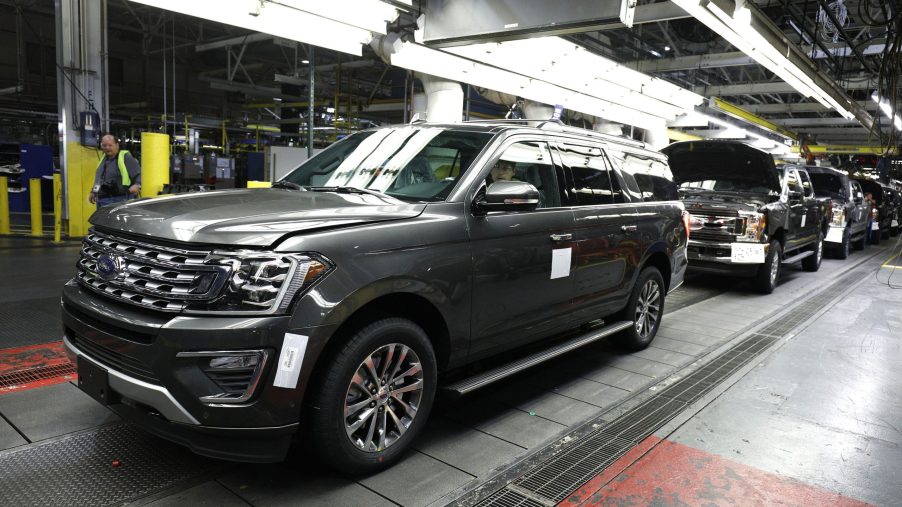
The Ford Expedition Somehow Has Less Legroom Than This Midsize Crossover
You can definitely fit a lot of people and their belongings inside the Ford Expedition. It’s already one of the roomiest SUVs on the market, but it’s also available in an extended-wheelbase version. However, even the Ford Expedition Max doesn’t have as much legroom as other smaller SUVs.
The Hyundai Santa Fe is only a midsize SUV, but its cabin is still a more hospitable place for taller people according to U.S. News. Are there any other areas where the Santa Fe is superior to the Ford Expedition?
Plenty of room inside the Ford Expedition
Both the Ford Expedition and its Max twin provide almost 44 inches of front legroom and 42 inches of second-row legroom. Things are predictively more cramped in the third row, but 36 inches of legroom is still good enough for average-sized adults. Combined with 42 inches of headroom, there’s more than enough room for everyone to stretch their limbs.
Adults can easily climb into the last row because the end second-row seats can slide upwards and out of the way. The seats themselves are supportive, wide, and have great adjustability options for the first two rows. With the third row folded down, drivers get over 63 cubic feet of cargo space.
If you have a Ford Expedition Max, that number is closer to 80 cubic inches. Folding down the second row gives you over 121 cubic feet of luggage space to use.
Both Expeditions have a power liftgate option, and the large back window can be opened separately if needed. The Expedition also has a fairly high towing capacity, up to 9,300 pounds with the optional tow package.
Powering the Ford Expedition is a turbocharged 3.5-liter V6 that makes 375 hp and 470 lb-ft of torque. It’s paired with a 10-speed transmission and front-wheel drive, though you can also add AWD. The Expedition’s wide dimensions can make it a hassle to turn, but at least body roll is kept to a minimum.
How the Hyundai Santa Fe compares to the larger Ford Expedition
Given the Hyundai Santa Fe’s size, it’s much easier to maneuver around tight corners. However, its base 185-hp four-cylinder engine isn’t very exciting and can’t accelerate quickly on the highway. Thankfully, you can upgrade to a quicker turbo-four that makes 235 hp.
The Hyundai Santa Fe has a surprisingly generous amount of legroom for a midsize SUV. Front passengers get just over 44 inches, while rear-seat occupants have almost 41 inches of stretch-out space. Headroom is only one inch shorter compared to the Ford Expedition.
While some midsize SUVs can seat as many as the Expedition, there’s only seating for five inside the Santa Fe. However, the seats are just as comfortable and the interior feels upscale. The infotainment system is also easy to use and comes with a good set of standard features.
The Santa Fe’s cargo dimensions obviously can’t compare to the Ford Expedition’s. Still, it has a decent total of 71 cubic feet of space with the second row flat. The loading floor itself is also lower than the Expedition’s, making it easier to use.
Which SUV is better for tall drivers?
The height differences inside each SUV are so minor that the average driver won’t notice. However, if you’re a taller rider, you know how important that extra bit of legroom can be. The Hyundai Santa Fe is also cheaper than the Ford Expedition by about $27,000.
However, if you have a whole family of taller riders, it may be worth it to invest in the Ford Expedition. It might have less front legroom, but its passenger and cargo capacities are hard to beat, even by large SUV standards.



